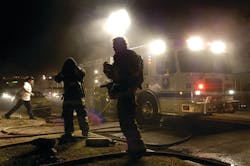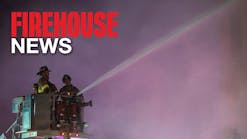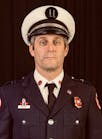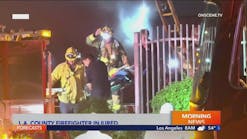The pressures of today’s world can lead to mental health issues in any individual. The death of a loved one, divorce and financial challenges are only some of the most obvious stressors that affect people’s coping mechanisms in today’s society.
Firefighters are a unique breed as they not only have to deal with the same issues as society in general, but also the fact that they are exposed to events that involve trauma, death and loss on a regular basis throughout their career. Being exposed to these events can have an effect on an individual over time and can compound significantly if they are not handled properly.
Unfortunately, fire service culture, which is built largely on the values of bravery and pride, prevents fire service members from asking for help when needed. Another significant barrier to firefighters receiving the proper treatment in these instances is that counselors provided through employee assistance and health programs often do not have an understanding of the fire service.
Occupational stress experienced by fire service members can lead to a condition known as Post Traumatic Stress Disorder (PTSD). PTSD is a mental health condition that is commonly brought on by experiencing a traumatic or terrifying event. Signs and symptoms will normally surface within three months of an incident, but can take longer. It is brought on by a combination of:
- Life experiences
- Inherited temperament or personality and mental risks, and
- The process in which the brain regulates the release of chemicals and hormones when a person is stressed.
Research has also shown that certain factors increase the odds for developing PTSD. Most prevalent are:
- Intensity of the traumatic event
- Having experienced other traumatic events, and
- The lack of having a good support system in place.
PTSD also creates a higher risk factor for individuals developing additional mental health problems such as:
- Depression
- Substance abuse
- Eating disorders
- Suicide
In addition, PTSD has been proven to contribute to other health-related issues such as cardiovascular disease, autoimmune deficiencies, chronic pain and muskoskeletal problems.
Symptoms of PTSD
The symptoms of PTSD can be quite extensive, but will fall into one of three categories: intrusive memories, avoidance or emotional numbing and anxiety and increased emotional arousal.
Intrusive memory symptoms include reliving the traumatic event through flashbacks or nightmares.
The second group is avoidance or emotional numbing. These symptoms are exhibited when the individual consciously avoids trying to think or talk about the event, discontinues activities/hobbies that were previously enjoyed, easily forgets things, has trouble concentrating and cannot maintain a close relationship with others.
Anxiety and increased emotional arousal symptoms involve the person being highly irritable, displaying outbursts of anger or other self-destructive behavior, suffering insomnia and hearing or seeing things that are not present.
All of these symptoms of PTSD can come and go, but can be triggered by any reminders of the stressful event that the person experienced.
Creating a Support System
Knowing what firefighters go through on a continual basis leads us to realize the importance of having the right measures in place for our firefighters. Prevention and early intervention are crucial in treating PTSD. As a chief, one of the best preventative measures is to create an organization that cares. This includes how each member treats one another, how the members treat the public, providing good training and tools, equipment and apparatus to perform our jobs and having solid systems in place when work must be performed (incident command system, operating guidelines, accountability, etc.).
Peer support systems are also be integral to prevention. Having a department chaplain or dedicated counselor can help provide guidance to members in difficult times. Whatever system is put into place, it is very important that the chaplain or counselor has a connection with the members and also possesses a basic knowledge of fire service culture. Web-based training at no cost is offered to clinicians to help them understand the fire service and how to apply interventions through a new program offered by the National Fallen Firefighters Foundation (NFFF) in support of Life Safety Initiative 13.
Educating department members on behavioral health and where to turn for help is also a big component in regards to prevention and early intervention.
Actions that can be taken and should be added to the organization include implementing the components recommended in support of Life Safety Initiative 13. The NFFF introduced a new Behavior Health Model on March 1, 2013, specifically targeting how to assist firefighters. These recommendations are based on psychological research and military response to PTSD. Training on these components is free to fire service community members.
After Action Review – The first component of the new model is the After Action Review and is meant to take place every time firefighters perform their jobs (“Every time wheels roll….”). This concept is taken from the military. It centers on five questions:
- What was our mission?
- What went well?
- What could have gone better?
- What might we have done differently?
- Who needs to know?
It is aimed at providing a mechanism for review while helping to put the event into perspective.
Curbside Manner – It has been demonstrated that the support given to citizens by firefighters after an event increases a person’s capability to recover from that event. This program teaches basic skills to help us make people feel that they are cared for and respected. It establishes the groundwork for the Stress First Aid component.
Stress First Aid – Stress First Aid takes the principles learned in Curbside Manner to help fire service members care for their own in times of stress. This program was adapted from models used by the Marine Corps and U.S. Navy. It is a process that monitors the recovery of fire service personnel and identifies those in need of intervention.
Trauma Screening Questionnaire (TSQ) – A TSQ is included as an additional component. It is designed to be administered three to four weeks after an event takes place to determine if an individual requires additional help. It has been adapted from the PTSD scale self-report version and is considered by the medical community as a valid assessment tool for PTSD. It is based on 10 questions with experiences of two times or more in the last week; a yes answer to six of the 10 questions constitutes a person to be evaluated by a clinician for intervention. The 10 questions of the survey are:
- Do upsetting thoughts or memories about the event come into your mind against your will?
- Having upsetting dreams about the event?
- Acting or feeling as though the event was happening again?
- Feeling upset by reminders of the event?
- Do you have bodily reactions (such as fast heartbeat, sweatiness, dizziness, stomach pains) when reminded of the event?
- Difficulty sleeping?
- Irritability or outbursts of anger?
- Difficulty concentrating?
- Heightened awareness of potential dangers to yourself and others?
- Easily startled at something unexpected?
As previously stated, Web-based training is also available for clinicians to assist in dealing with fire service members.
In addition, the 2013 edition of NFPA 1500 should also be referenced to help in establishing a behavioral health assistance program for your department.
These services should all be added to the program for the department. The financial impact is negligible with the resources now being made available and the reward is immeasurable if we can help assist our members.
This week is the International Fire/EMS Safety week and this year’s theme is: “Saving Our Own: An Inside Job.” You can find more resources here.
References






